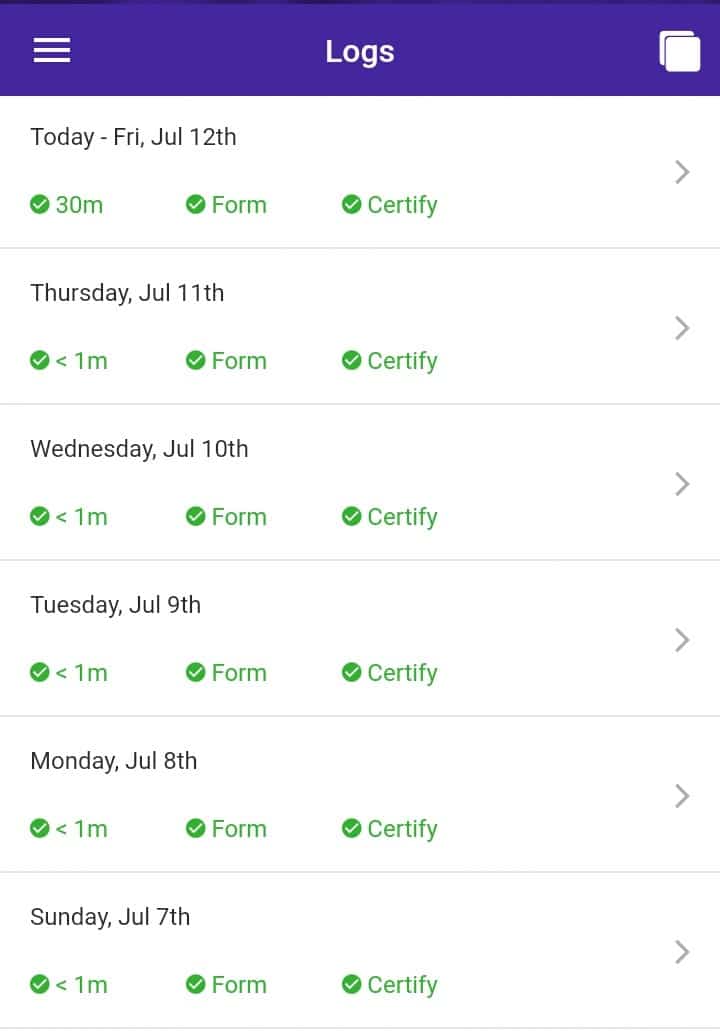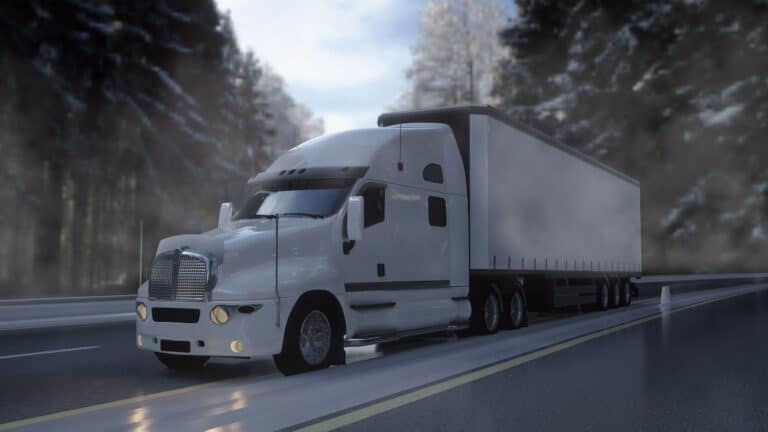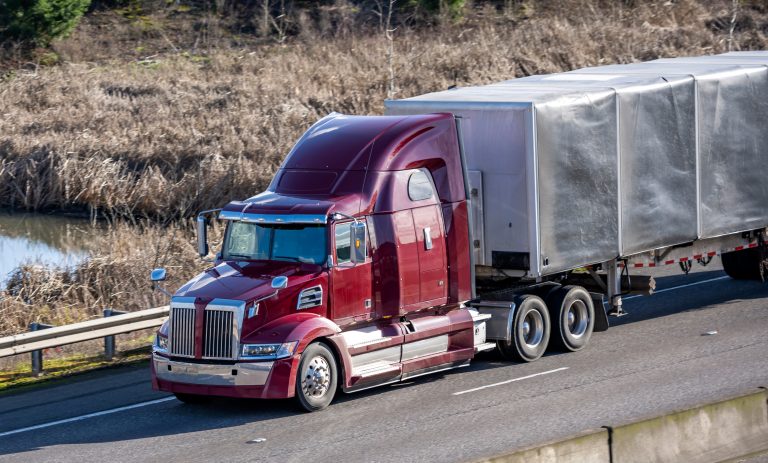The main reason truck drivers need an ELD is to comply with the truckers electronic log law that came into full effect January 1, 2023. Apart from compliance, an efficient electronic logbook should also be a helpful tool to streamline daily tasks and improve operations.
Even certified by a third party, ELD services may lack extra features that can increase productivity. In this article, we will help truckers get a better understanding of this law’s requirements and what HOS247 electronic logbooks bring to the table.
HOS Rules and Electronic Logbooks
Trucking accidents are a primary concern for transit authorities. Driver fatigue caused by overwork threatens public safety on the road. That is why Transport Canada designed a mandatory truckers electronic log law that obliges drivers to comply with hours of service regulations.
Hours of service refers to the time a driver can operate a commercial motor vehicle and be on duty. Although the Canadian ELD mandate was passed in 2017, the implementation has suffered several delays, and the new enforcement deadline is scheduled for January 1, 2023. According to it, most commercial vehicles in Canada are required to use electronic logs for truckers to record HOS by that date.
The ELD is a technological advancement that comes as an alternative to the traditional paper logbooks or outdated automatic on-board recording devices (AOBRD). Elogs help operators keep an automatic and accurate record of their driving hours through a hardware piece that connects directly to the vehicle’s engine to record that information.
An elog system may have other features that optimize fleet performance and facilitate communication between the operator and fleet management, streamlining the administrative tasks.

Who Must Comply with the Canadian ELD Mandate?
The Canadian ELD mandate affects most federally regulated carriers. Depending on the type of transportation service —extra-provincial or within a province —the motor carrier will fall under federal or provincial jurisdiction. Each province is allowed to adopt the rules that suit local administrative norms.
Alike in the US, Canadian truckers’ law also has several exemptions:
- Short-term rentals.
- Commercial vehicles built before the year 2000.
- Vehicles operated within a 160 km radius from their home terminal if it doesn’t require keeping log books.
- Vehicles operated by a motor carrier with an exemption issued by provincial or federal authorities.
Are Elog Apps Compliant with the Truckers Electronic Log Law?
Since smartphones have now become an integral part of our lives, you might wonder whether an application would be enough to comply with the truckers electronic log law. There are a few things that you need to understand about using an app for your RODS.
In order to achieve compliance with the Canadian mandate standards carrier companies are required to use an ELD that synchronizes with the vehicle engine control module to record the RODS details directly. An elog mobile app can be used as part of the ELD system to display the information, but without a certified electronic logging device that connects to the engine, it won’t be enough to comply with the truckers electronic log law.
While Transport Canada allows fleet companies to choose the electronic logging device of their preference amongst those in its certified list, it is important to know what other benefits the electronic logging device may offer to your business.
HOS247 Is a Leading ELD Service Provider

HOS247 offers a reliable platform that helps maintain drivers’ HOS records in order. We provide an efficient ELD solution with a wide range of benefits, including:
- Efficient and responsive customer support team. We understand how valuable truckers’ time is. HOS247’s multilingual team of reps provides clients with efficient technical service from Monday through Sunday. Thanks to our callback policy, no customer will be left unattended: if the call gets interrupted, our support reps will reach out to you immediately.
- No contracts. We offer a flexible system of monthly or yearly subscription, so our clients are not locked in long-term contracts. You can easily scale your plan up or down or cancel it without paying any fines or penalties.
- 14-day trial. Before we take you on board, we want you to give you the chance to experience the services that HOS247 offers. Our two-week trial period allows customers to get to know the system and its perks to make sure it works out for them.
- Reliable hardware. Our hardware is durable and keeps accurate records. The steady Bluetooth connection makes sure the data is correctly transferred and displayed on the driver’s mobile device. In case of breakage, we offer a free replacement as per our one-year warranty policy.
- Driver-friendly interface. Using our ELD solution is easy. Operators don’t need training and their records can be easily managed so they can focus on driving.
HOS Rules in Canada
According to Transport Canada, the ELD mandate will be fully implemented by January 1, 2023. By that time, most federally regulated commercial motor carriers will be obliged to operate using electronic logging devices to record their hours of service. HOS indicates the maximum number of hours the driver can be on duty within a given period, including driving time and rest breaks. Let’s take a closer look at the rules truckers’ electronic logbooks must support in order to comply with the new law.
Canadian HOS regulations are the same for property-carrying and passenger-carrying drivers and carriers; they may differ depending on the location of the driver. The 60° parallel is considered the boundary between the northern and southern parts of the country, where the mandate rules are applied differently.

Canada South contains ten provinces, the largest of which are Quebec, Ontario, British Columbia, and Alberta. Canada North includes three territories: Northwest Territories, Nunavut, and Yukon. While the South has daily and shift regulations, the North is only limited by shift restrictions. Let’s compare the differences:
Driving limit
South: 13 is the max hours truckers can drive in one day and within one work shift.
North: 15 is the max hours truckers can drive within a shift.
On-duty limit
This includes time logged as “Driving” and “On-Duty Not Driving.”
South: After accumulating 14 hours on-duty in one day or 14 hours in a shift, the driver must take 8 consecutive hours off-duty before driving again.
North: After accumulating 18 hours on-duty in a shift, the driver must take 8 consecutive hours off-duty before driving again.
Sleeper Berth
South: 10 or more hours for individual drivers. The total of hours can be split into two periods, no less than 2 hours each.
North: 8 or more hours for individual drivers. The total of hours can be split into two periods, no less than 2 hours each.
Mandatory off-duty time
Applies for the South only.
Drivers must have:
- A minimum of 10 hours off-duty every day (defined by the day’s start time).
- A full 8 consecutive hours off-duty after a 16-hour work shift.
The driver can spread their off-duty time throughout the day with two 1-hour breaks. While driving in Canada South, the driver is allowed to defer up to 2 hours of their required daily off-duty time to the next consecutive day.
Cycles
There are two cycles drivers can choose to log their hours:
- Cycle 1 has a 7-day schedule with a required 36 consecutive hour off-duty reset period.
- Cycle 2 has a 14-day schedule with a required 72 consecutive hour off-duty reset period.
The truckers electronic log law may seem difficult to understand and follow at first, but a reliable ELD solution for Canadian and cross-border trucking operations will facilitate this task. HOS247 is a top-rated provider that has proven the quality of its services in the US and is now coming to the Canadian market. If you have any doubts, you can contact our support managers that will answer all questions and you can request a demo to try our solution.

I’ve co-founded, built and managed several transportation-related businesses. Now, I’m a founder and CEO of HOS247 – an AI Transportation Platform for trucking companies, freight brokers and other logistics operations. We are transitioning old-style operations to technology-advanced logistics entities and help them to grow their businesses. ELDs (electronic logging devices), fleet tracking and management 2.0 combined with AI-powered dispatch tools.












Staying on top of hours of service (HOS) rules is crucial for truckers and fleet managers. These regulations are designed to keep roads safe and drivers healthy by preventing fatigue-related accidents. However, keeping accurate track of driving time and rest

HOS247 HOS247 Rating HOS247 HOS247 Rating HOS247 is a top ELD provider in the trucking industry. We offer a heavy vehicle log book app for transportation professionals that takes care of compliance and optimizes fleet operations. Our customers

The Canadian ELD mandate has been talked about at length among truckers and carriers for a couple of years now. According to this legislation, commercial vehicle owners and drivers operating in Canada must switch to a certified electronic logbook before